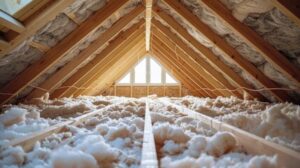RV Storage is a great option for people who want to keep their vehicle away from home. It also helps them avoid costly repairs and maintenance.

Storage costs vary depending on the location and facility amenities. Some facilities offer specialized RV storage with amenities like dump stations and enclosed climate-controlled units. Contact (918) 504-0720 for more details.
Storage space is one of the most important factors to consider when planning a RV storage business. RVs vary in size and length, so it’s important to choose the right storage solution to accommodate your customers’ needs. Whether you need a covered storage space or an open lot, you can find the right fit for your business.
The cost of RV storage varies depending on location and type. RV storage spaces in a high-demand area are often more expensive than those in an unpopular area. Additionally, facilities with amenities such as wash areas and electricity typically have a higher price tag.
In addition to the cost of RV storage space, it’s also important to consider zoning regulations and wastewater runoff. Make sure you consult your local government and city council about these issues before starting your project. You may also need to get a zoning variance for your site.
When it comes to RV storage, the most popular choice is an enclosed space. These spaces are more expensive than outdoor storage options, but they provide complete protection from the elements and offer maximum security. They’re ideal for discerning RV owners, so you can expect to attract a clientele that values privacy and security.
An acre of RV storage space can be divided into 50-70 spaces, depending on the size of the RVs you’re storing. However, calculating this number is not as simple as simply measuring the acre and multiplying it by 100. There are several considerations that go into determining how many RV spaces you need per acre, including the type of RV and its accessories.
Most people rent RV storage space to protect their investment. They want to keep their vehicle safe from damage and rust, and they don’t have the space at home. They can also use their storage space as a weekend getaway spot. This way, they can enjoy pristine natural attractions without having to worry about storing their vehicle. While traditional self-storage spaces are usually used for more unfortunate reasons, RV storage space is mainly sought out by people who are on the upswing in their lives.
Security
A top-tier RV storage facility provides a safe and reliable place to store your RV, freeing up space at your home or on your property. The best facilities use security measures like gated access, surveillance cameras, and on-site staff to prevent theft and vandalism. They also offer amenities like clean, well-lit areas and ample parking spaces.
A good RV storage facility should be constantly monitored by CCTV, which should include night vision capabilities. This will help to deter criminals and provide valuable evidence in the event of an incident. Additionally, the camera system should be equipped with motion sensors that can trigger alarms when unauthorized activity is detected.
The facility should have a tall, durable fence and a gated entry that can be controlled with an access code. The gate should be constructed from steel or reinforced materials, which will make it more difficult for thieves to break in. This type of security is a good option for long-term storage, but it may not be enough for short-term storage.
Another important feature of a secure RV storage facility is the ability to monitor your vehicle remotely. Many providers offer an app that allows users to remotely lock or unlock their RV, monitor surveillance footage, and receive alerts if the security system detects unusual activity. Some even allow owners to control their RV’s alarm from afar, which is particularly helpful if you are not at the storage facility yourself.
Some RV storage providers offer insurance plans as part of their storage packages. This can be a good idea, especially if you are storing your RV for a lengthy period of time, as it will help cover any damages caused by weather or theft. In addition, some RV storage providers have onsite mechanics and maintenance services to keep your RV in great condition while it’s in storage. This is an excellent way to avoid costly repairs and keep your RV in pristine condition. This is especially useful for those who use their RVs on a regular basis, as it will reduce the amount of wear and tear that occurs while the vehicle is in storage.
Amenities
Storage for RVs can range from a professional lot where you pay a monthly fee to your own garage or backyard. Many facilities offer a variety of amenities to appeal to RV owners, including security and convenience. RV owners may also choose to store their rigs at a facility that provides RV and boat services. The cost of these services can offset the extra storage fees.
A good RV storage facility should have adequate security to protect the vehicles on the property, according to Mako Steel. Ideally, it should have perimeter fencing and 24-hour security surveillance cameras. It should also have electronic gates that limit access to specific tenants based on their entrance code. In addition, it should have an onsite dump station, wash station, and electrical outlets at covered spaces. This way, RV owners can wash and prepare their rigs before taking them on trips or vacations.
Managing a storage facility for RVs and boats can be demanding, as the customers often have more questions than standard self-storage renters. Some may want to tour the facility before renting or have questions about winterizing their vehicles. The customer service experience is essential for a successful RV storage business. Happy customers will return, recommending your facility to their friends and family.
Before deciding on the location of your RV storage, make sure that it is close to the things you love to do. For example, if you love hiking or skiing, look for a place that is near your favorite natural attractions. This will save you from the extra expense of having to travel far to reach your destination.
RV and boat storage is a growing market, as these vehicles are often used for recreational purposes. However, many homeowners lack the space to store their rigs, so they turn to storage facilities for help. The amenities available at these facilities can vary, but they typically include 24-hour access and a secure gated lot.
If you’re looking to start an RV and boat storage business, consider how actively you want to manage the facility. You can take on a more hands-on role or let a management company handle the day-to-day operations for you. The latter option may be less expensive and more feasible for smaller businesses.
Cost
RV storage facilities can vary in cost depending on the type of space and amenities available. Some of these facilities include outdoor uncovered parking spaces, covered RV storage spots, and shared or private indoor storage rooms. Indoor storage is the most expensive option and provides the most protection from the elements, but it can also be the most convenient. Additional amenities like dump stations, wash areas, and electricity may also increase the price of RV storage.
In general, RV storage costs more than self-storage because it requires a larger space to accommodate the size of an average RV or camper trailer. However, some RV owners prefer to pay more for convenience and a sense of safety. This is because they often have valuables and belongings stored in their RVs. Having their valuables in a secured location makes them feel safer when they’re away from home.
Many RV owners look for storage facilities that are close to their vacation destinations. These facilities can offer next-level convenience and allow them to spend more time on their adventures. They also tend to offer better security and amenities, such as access to electrical power and 24-hour surveillance cameras. In addition, they may offer special services for RVs, such as battery charging and sewage dumping.
When choosing an RV storage facility, it is important to shop around and compare pricing. A reputable facility should be transparent about their fees and contract terms. It should also provide a detailed breakdown of all charges and be available to answer questions. It is also a good idea to ask about insurance coverage for RVs that are being stored in the facility.
There is a great deal of pent-up demand for RV and boat storage across the country. This growing segment of the storage industry offers attractive yields and a unique opportunity to diversify your portfolio. However, it is important to consider the upfront and long-term investment costs before committing to building a new facility.
Before starting construction on a new RV storage facility, you should first understand the needs and expectations of your target market. This will help you decide what amenities and features to include in the facility. For example, some RV owners are looking for high-end executive-class luxury facilities, while others may be more interested in a bare-bones facility to save money.








